Medication for swelling of the throat with allergies. Laryngeal edema during allergic reactions: how to manifest and what to do
Throat swelling is one of the symptoms of an allergic reaction to an irritant. How strong it will be depends on a number of factors: the intensity and duration of exposure of the allergen to the body, the health of the victim and the timeliness of medical care.
Why is there a problem?
The factors that cause an allergic reaction of the body, most often act:
- food (for example, honey, nuts, eggs);
- dust;
- medications;
- plant pollen;
- insect bites;
- household chemicals.
Human exposure to irritants can cause both local and systemic allergic symptoms, including throat swelling. This symptom may have different degrees of manifestation:
- quincke's edema (the most severe form of an allergic reaction: the larynx swells, a person has difficulty breathing and swallowing);
- pharyngitis, laryngitis of allergic etiology;
- pharyngeal inflammation;
- anaphylactic shock.
If you do not eliminate the swelling in the throat (regardless of the cause of its occurrence), the patient may develop asphyxiation (asphyxiation).
Main features
In the early stages, throat swelling is determined by feeling discomfort or presence foreign body in the upper respiratory tract. The act of swallowing is accompanied by pain, problems with breathing.
The patient is faced with the following symptoms:
- mucous membrane oral cavity swelling (sensations as with angina);
- when you try to turn your head to the side a person may experience pain in the neck;
- signs of poisoning (intoxication) are diagnosed: hyperthermia, headacheweakness in the body, fever;
- the timbre of the voice changes - it becomes hoarse;
- the posterior pharyngeal wall appears hyperemic, granularity and edema are determined;
- allergic reaction to the irritant causes paroxysmal dry cough and tickling sensation in the throat;
- breathing is accompanied by shortness of breath, tachycardia is diagnosed;
- the patient may be "hot", cold sweat appears on his face.
For pharyngitis of an allergic etiology, in addition to the indicated signs, a sensation of dry mouth and fever in the throat is characteristic.
Allergic laryngeal edema manifests itself with such symptoms:
- dyspnea;
- at the patient the voice partially or completely disappears;
- the function of swallowing is impaired;
- difficulty breathing, not enough air;
- there is a sense of presence foreign object in the throat.
The most critical form of an allergic reaction, which is accompanied by swelling of the mucous membranes, skin and subcutaneous tissue. The patient is urgently required health careif he has these symptoms:
- persistent dry cough;
- signs of suffocation;
- swelling of the neck veins;
- the skin of the face becomes bluish;
- convulsions, loss of consciousness.
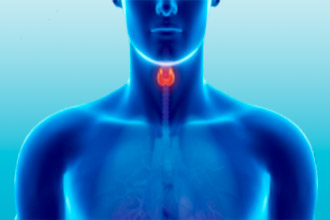
Angioedema (another name for angioedema) may extend to the face, hands, rib cage. Asymmetric puffiness localization. In addition to the larynx, edema affects the esophagus, stomach, intestines. The main danger of such an abnormal state of the body is its rapid development: within an hour, the swelling can spread throughout the body. That is why at the first symptoms of angioedema should consult a doctor.
Other body signals
Depending on the degree of manifestation of the problem, the throat of allergic etiology can manifest itself with the following symptoms:
- noise when breathing, shortness of breath at rest or during physical exertion;
- redness and (sky);
- inhaling the sternum while inhaling;
- breathing becomes shallow, irregular, convulsions may appear.
Other signs of an allergic reaction include itching in the ears, swelling of the neck and face, nasal congestion (runny nose) and lacrimation.
After allergens enter the human body, a specific reaction of the body can develop, which often manifests itself in the form of rash, sneezing, tearing, itching, edema. The most dangerous response of the body to the penetration of foreign matter is an allergic swelling of the larynx. The danger of this symptom lies in its rapid development, so in order to save a person’s life, it is necessary to know the main symptoms of the disease and be able to provide first aid in a timely manner.
The reasons
Swelling of the throat with allergies cannot be considered as a separate disease. This pathology is most often manifested as a symptom of serious diseases, as well as as a result of an allergic reaction of the body to an external irritant. Allergic most often occurs in childhood. Since the length of the larynx in children is shorter than that of an adult, edema can have more serious consequences and requires emergency medical care in order to avoid suffocation.
Allergic reactions can cause:
- strong dustiness of the room;
- plant pollen;
- pet hair;
- some foods and drinks;
- harsh chemical odors;
- medications;
- insect bites.
Important! According to medical statistics, most often laryngeal edema in allergies occurs after eating peanuts, bee products, citrus fruits, and fish dishes.
At the first signs of the development of allergy, you should seek advice from an allergist, who will help not only to determine the cause of the disease and prescribe an effective therapy, but also recommend the funds necessary to provide emergency aid in case of edema of the larynx. Often it is the patient’s well-informed knowledge of the possible condition, the main signs of the development of the disease and the ways of first aid to save a life.
Symptoms
Allergens can enter the body in different ways, penetrating through the skin, mucous membrane gastrointestinal tract and organs of the nasopharynx. Usually the first symptoms of constriction in the throat occur immediately after the penetration of the allergen. The stronger the symptoms, the faster the narrowing of the lumen in the larynx.
Signs of swelling vary depending on the stage of the disease. So, in the early stages of an allergic reaction, laryngeal edema can be confused with the common cold, because the pathology is accompanied by rhinitis, sneezing, a sensation of an extraneous object in the throat, sore throat, and pain when swallowing. However, apart from these causes, other manifestations of a viral infection, such as body aches, chills, and general weakness are absent.
In later stages, the swelling is manifested by hoarseness, shortness of breath, dry cough, difficulty breathing. The patient has a desire to inhale more air, but deep breathing causes pain. Due to lack of oxygen, the skin turns pale, the patient feels panic fear of suffocation.
Important! The most dangerous stage of the disease is a condition where breathing becomes shallow, the skin turns pale, the pupils dilate, the patient is in a pre-unconscious state.
Allergic edema of the larynx can be divided into several main types, depending on the location, causes and symptoms of the disease:
- angioedema;
- anaphylactic shock.
 In allergic pharyngitis, the mucous membrane of the nasopharynx inflames. The disease is accompanied by swelling of the tongue and mucous back wall larynx, dry nasopharynx, feeling of a foreign object, hoarseness, sharp painful sensations when swallowing. Most often, allergic pharyngitis manifests itself against the background of inhalation of harsh chemical odors.
In allergic pharyngitis, the mucous membrane of the nasopharynx inflames. The disease is accompanied by swelling of the tongue and mucous back wall larynx, dry nasopharynx, feeling of a foreign object, hoarseness, sharp painful sensations when swallowing. Most often, allergic pharyngitis manifests itself against the background of inhalation of harsh chemical odors.
In allergic laryngitis, swelling of the entire surface of the larynx occurs. In this case, the patient has difficulty breathing. Also, this type of allergy is characterized by such symptoms as a dry cough, similar to barking, numbness of the lips and in the area of the nasolabial fold. Causes causing allergic rhinitis, lots of:
- infectious diseases;
- food;
- dust;
- medications.
Quincke edema occurs unexpectedly, affecting the mucosa of the nasopharynx. In this situation, swelling of the eyelids, lips, oral mucosa, airways.
If you do not provide timely assistance with angioedema, oxygen starvation (asphyxia) often develops. The patient has difficulty breathing, the tongue becomes blue, the person can speak only in a whisper.
Anaphylactic shock develops immediately after the body is in contact with the allergen. Most often, this condition occurs after the use of drugs to which a person has individual intolerance. More than a quarter of all cases of anaphylactic shock are fatal due to asphyxiation.
After a dangerous substance enters the body, an allergic reaction begins to develop: severe swelling, swelling, the site of the drug or bite reddens, it begins to itch. In the course of the progression of symptoms, which occurs from a few minutes to several hours, itching spreads throughout the body, the patient's blood pressure drops, throat swelling develops, and as a result, hypoxia. The skin becomes pale, and the limbs become bluish.
If anaphylactic shock developed on the background of food allergies, in this case, the pain occurs in the stomach, nausea, vomiting, indigestion, as well as swelling of the nasopharyngeal mucosa.
First aid
In case of development of pharyngeal edema, it is necessary to immediately take the right measures. The first thing to do is to try to identify and eliminate the cause of the development of an allergic reaction.
So, if the cause was dusty indoor air or harsh chemical odors, you must bring the person to fresh air.
If food allergies have developed, you should do a gastric lavage and give the patient a sorbent, for example, activated carbon, Enterosgel, Smektu, Atoxil, and the like.
If an allergy has occurred as a result of an insect bite, you need to remove the sting, squeeze out the poison, put a tourniquet above the bite.
After that, it is necessary to provide first aid to the victim, aimed at removing the swelling of the nasopharynx and restoring breathing. In this case, use fast-acting antiallergic agents, for example, Suprastin, as well as hormone-containing drugs, such as Prednisolone or Dexamethasone. Drug treatment should be started at the first sign of an allergic reaction in order to avoid further development of the pathology.
There are several ways to provide first aid for allergies:
- drink plenty to remove toxins from the body;
- local exposure to cold on the throat area (hot water bottle with ice, towel soaked in ice water) to reduce swelling and prevent asphyxiation;
- place the victim on a flat surface and slightly raise the legs, for example, placing a pillow under them;
- release the throat area (open the collar, remove the scarf), ensuring unhindered access of oxygen;
- drip in the nose vasoconstrictor drops for which the patient has no allergies.
Treatment
After the emergency care has been provided to the patient, he should be hospitalized, since similar situations In-hospital treatment is often required, especially in cases where a child falls ill. After the initial examination, the specialist will be able to prescribe the necessary treatment. Standard therapy for edema caused by allergies, includes a set of measures aimed at:
- full normalization of the respiratory process, which is achieved through the use of more powerful antihistamines;
- elimination of the likelihood of development bacterial infection with the use of antibiotics;
- detoxification and dehydration of the body by parenteral administration of glucose solutions, vitamins, calcium gluconate and other drugs to maintain the basic vital systems.
Important! In severe cases, when drug therapy is ineffective, resorting to such procedures as intubation or tracheotomy, which should be carried out exclusively in the hospital.
If conservative methods of treatment, as well as nasotracheal intubation did not bring the desired result and laryngeal edema was not eliminated, the patient is subjected to surgery - a tracheotomy. In this case, in order to restore normal breathing, a small incision is made on the throat, which is located below the area of formation of edema, where a special hollow cannula is inserted.
The larynx is one of the organs that is often exposed to allergens. Upon contact of the larynx mucosa with an irritant, there is a violation of capillary permeability, which ends with the release of transudate. This causes the development of allergic etiology in children.
Considered a condition in children is not an inflammatory process, which is characterized by rapid development. In a very short time the airway narrows greatly, in severe cases, it can all end in overlap. Experts note that most often this pathology in children appears as an allergy to certain foods and medicines, although other allergens can cause rapid laryngeal edema.
This condition is most dangerous for young children - due to the natural narrowness of the airways, even a small swelling can cause suffocation.
Symptoms of allergic edema of the larynx in children
The clinical picture in the condition under consideration will depend on how much the airways narrow. In the first stage of the development of allergic edema of the larynx, children will experience the following symptoms:
- increased breathing;
- light breathlessness;
- reduction of pauses between inhalation and exhalation;
- decrease in the frequency of respiration and pulse;
- difficulty in holding the breath, a little later the same problems arise with the process of exhalation.
For the treatment and disposal of MOKROTY our readers successfully use a natural remedy for MOKROTHA. This is 100% natural remedyThe basis of which includes only herbs, and mixed in such a way as to most effectively deal with the disease. The product will help to quickly and effectively defeat the cough in a short time, and once and for all. Since the drug consists only of herbs, it has no side effects. Does not affect pressure and heart rate. Get rid of sputum ... "
If the allergic reaction of the body is more intense, then doctors will speak about the second stage of allergic edema in children. This condition will be characterized by the following symptoms:
Often the described condition is accompanied by angioedema when there is a rapid swelling of the face and neck. With its development, children may lose consciousness, and if urgent, qualified medical care is not provided, everything can be fatal.
Symptoms of allergic edema of the larynx in children can develop quite slowly, and can be rapid. In the first case, the baby will be anxious. If he is not yet speaking, parents can pay attention to the causeless crying, frequent movements of the legs and arms. If the child is already talking, then he will come up and tell about his unpleasant feelings.
Allergic edema in children can be acute and chronic. The first option is more common, quickly passes with competently rendered medical care, but it can occur again with the next appearance of the allergen in the child’s body.
Causes of development
Symptoms of the disease in question appear only if an allergen acts on the child’s body. Of all the known irritants that can trigger allergic laryngeal edema, the following can be identified:

In addition, a fairly strong allergen is pollen and in this case, in children, symptoms of allergic laryngeal edema will be especially intense when going outside when spring / summer is coming.
It is worth knowing that if the symptoms of the condition in question are already present, you should immediately contact a pediatrician, this specialist will refer the child to an allergist. Even if the baby is forced to take some medicinethen it must be immediately canceled and the doctor explained the situation - it will either completely replace the treatment regimen or simply reduce the dosage of the drug.
Throat edema is a narrowing of the lumen of the larynx and trachea, which is caused by swelling of the mucous membrane. This is a rapidly progressive process that can occur at any age.
Allergic edema of the larynx represents the greatest danger to children, because the processes in the child’s body usually proceed faster than in adults.
On the Internet, you can see photos of the swollen mucous membrane, as well as read the stories of patients who have had this disease. When this happens for the first time, a person may become confused and not know how to act.
Regardless possible reason stenosis of the throat, you need to call an ambulance to the patient examined by a doctor and prescribed drugs to help cope with the disease in the acute stage.
It is important to know how to behave in this situation in order to help yourself or your loved ones before medical assistance is provided. In some cases, information on how to cope with laryngeal edema can save a person’s life.
What is the nature of laryngeal edema?
Laryngeal edema is a vasomotor-allergic process that proceeds quickly and can have undesirable consequences for the patient if measures are not taken. emergency room, neutralizing the effects of allergens on the body.
Edema can have both inflammatory and non-inflammatory nature:
- Injuries to the larynx, with ingestion of a foreign body or surgery.
- Burns hot food or aggressive chemicals (acids, alkalis), trapped in the esophagus.
- Radio or radiotherapy in some patients may cause allergic swelling of the larynx.
- Suppressive processes in the pharynx and surrounding tissues of adjacent organs.
- The presence of progressive tumor processes.
- Acute infectious diseases.
- Chronic infectious diseases such as tuberculosis or syphilis.
Non-inflammatory laryngeal edema occurs with local circulatory disorders due to systemic diseases. It is the result of squeezing of the veins and lymphatic vessels. Medicines and food can also trigger laryngeal edema. Treatment of this disease is best done on an outpatient basis. The scheme of therapy for each patient should be chosen individually by the doctor, based on the etiology of the development of this symptom and its severity.
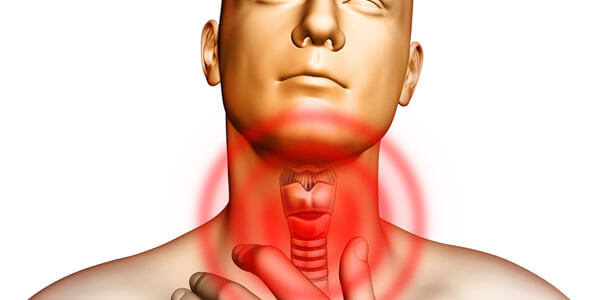
The causes of allergic edema of the larynx can be the following:
- Inflammatory process in the throat that led to this adverse effect. The culprit of this phenomenon is laryngitis or laryngotracheobronchitis.
- The presence of an acute infectious disease. Laryngeal tumors, regardless of whether they are benign or malignant.
- Chemical burns larynx or mechanical injury.
- Pathological processes in adjacent organs.
- The development of an allergic reaction to substance in the body. This can even be a reaction to household irritants, such as dust mites.
Depending on what causes provoking laryngeal edema, treatment is carried out at home or in hospital. If you suspect a narrowing of the throat, be sure to call an ambulance, because this process can proceed unpredictably. There are drugs that will help to quickly neutralize the allergic reaction, but they must be prescribed by a doctor.
Symptoms
Symptoms of stenosis of the larynx depend on the severity of the pathology.
In the initial stage of the disease, a person’s breathing becomes less deep. The pulse of the patient quickens, inhaling and exhaling is difficult. The development of the disease occurs quickly, the patient's condition worsens.
When a person has allergic swelling of the larynx 2-3 stages The following symptoms are observed:

At stage 4 of the disease, the patient's skin becomes earthy. The pupils dilate, and breathing becomes intermittent and surface swelling of the face during allergies is observed. If there is a strong oxygen starvation, then loss of consciousness is possible, and even death.
In people whose health condition is aggravated by such pathologies as systemic connective tissue diseases, infectious diseases and oncology, the development of symptoms of laryngeal edema caused by an allergen can be rapid.
Child allergy
Allergy in a child has the same etiology as in adults, but it should be noted that the tissues of the child’s body are much more sensitive to many stimuli, and its reaction to irritating factors may have a fulminant character. If a child’s laryngeal edema is suspected, he should immediately be shown to a doctor.
It is very dangerous to treat a baby on your own, because the situation can easily get out of control. In this case, if the ambulance recommends hospitalizing the child in the hospital, then you should not refuse. This is a situation where it is better to be safe and not to rely on chance.
Throat swelling in allergies: how to properly treat and whether you need to call an ambulance
 One of dangerous symptoms, which endangers a person's life, is swelling of the throat with allergies. Usually, its manifestations begin with mild discomfort, which increases rapidly. It becomes more difficult for the patient to breathe, the throat hurts and a cough appears.
One of dangerous symptoms, which endangers a person's life, is swelling of the throat with allergies. Usually, its manifestations begin with mild discomfort, which increases rapidly. It becomes more difficult for the patient to breathe, the throat hurts and a cough appears.
The breathing of the patient becomes noisy, whistling appears in it. Without proper treatment, stenosis of the throat can develop, causing choking. First of all, it is necessary to neutralize the effect of the allergen on the patient's body, therefore, drugs that can do this quickly are prescribed.
The treatment of edema of the throat, depending on the reasons for it and the severity of the disease, can be performed by conservative or surgical methods.
Drug treatment of throat edema in allergies can be carried out with drugs belonging to the following groups:
- Antibiotics wide spectrum actions.
- Antihistamines 2 or 3 generations.
- Diuretic drugs that remove excess fluid from the body.
- Corticosteroids.
If there is no positive effect in the treatment of drugs, even after increasing their dose, the doctors decide on the feasibility of surgical intervention. The operation to excise the throat is called a tracheotomy. Throat tissues are dissected, and a tube is inserted into the opening, which prevents the oxygen supply from entering the body from completely blocking.
When does the patient need emergency care?
With the rapid deterioration of the patient, it is urgent to begin emergency care and treatment.
Depending on what caused the allergic reaction, it is necessary to take the necessary measures to eliminate the effects of the allergen:

With symptoms of laryngeal edema, emergency call is mandatory. In acute stenosis of the patient should be laid on his back, under the legs lay a roller. It is better for a person to unbutton his clothes in order to provide the best air flow. If it is indoors, be sure to open the window for airing.

Therapy of laryngeal edema in the hospital
The treatment regimen for each patient in the hospital is prescribed by the attending physician. There are medicines, the use of which can quickly relieve swelling of the throat. Injections of adrenocorticotropic hormones, cortisone and dehydrocortisone are used both for inflammatory edema of the larynx and for their allergic nature. Intravenous and intra-nasal blockage of glucose gives a good result in some cases.
If the disease is caused by pathology internal organs and systems prescribed drugs that normalize their function. In the presence of an ulcer in the larynx, its opening can help quickly eliminate swelling. If the situation is life threatening, then doctors can resort to a tracheotomy. Throat swelling in allergies is a sufficient reason for hospitalizing a patient at any age, because there is a threat to the life of the patient.
Its properties and composition. What do doctors say about this tool (a divorce or not), indications for use.
If a person has a sore throat and sore throat, the first thought he has is a cold or flu. But this is not always the case, because these symptoms may indicate other diseases, such as bacterial or viral infection, allergies and so on. Can your throat ache with allergies, you ask? Yes, of course, and this reaction is not as harmless as it seems at first glance. We offer to find out what kind of illness is throat allergy and how it differs from other ailments.
How a throat can ache from allergies
Since each person’s body is unique, we all react differently to allergens. But almost always, the mucous membranes of the face and body suffer primarily from the penetration of the allergen into the body, because they are the first to encounter it. Small particles penetrate through the nose and throat into the human body and at the same time they irritate these parts of the face. Sore throat begins, tearing, sneezing, nasal discharge, redness of the eyes and spoiled mood is guaranteed. But these are the first signs of allergy.
The reasons for the occurrence of the disease are many. Your throat can ache because of exposure to tobacco smoke, that is, you have an allergic reaction to smoke, or possibly pollen from flowering plants, poplar fluff, animal fur, which sheds. In addition, house dust, mold can also be an allergen, and sometimes throat irritation is a manifestation of cold allergies. Often the cause of the disease is too dry indoor air, which irritates the mucous membranes on the face. As a result, inflammation of the throat and eyes occurs, it becomes painful to swallow and breathe uncomfortably.
As can be seen from the above, the pain in the throat with allergies is quite possible. And especially if a person has an individual intolerance to any allergen, then the likelihood of an allergy in the throat increases. According to statistics, one third of the world's population at least once, but there was a manifestation of an allergic reaction, and exacerbations occur in the spring and summer period, so you should not discard the possibility of the occurrence of the disease in your case. But how to understand that this is not a cold or a virus?
How to distinguish a throat allergy
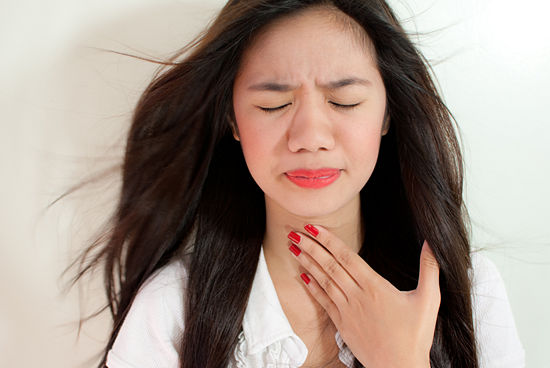 Inherently sore throat is the result inflammatory process, i.e discomfort provoked bacteria or viruses on the tonsils or throat. In this case, the victim quickly rises in temperature. state of health deteriorates, body aches and muscle pain is possible, the throat hurts and tingles, sometimes it increases the lymph nodes. It can be sore throat, tonsillitis, a cold or other viral diseases that are contagious to others.
Inherently sore throat is the result inflammatory process, i.e discomfort provoked bacteria or viruses on the tonsils or throat. In this case, the victim quickly rises in temperature. state of health deteriorates, body aches and muscle pain is possible, the throat hurts and tingles, sometimes it increases the lymph nodes. It can be sore throat, tonsillitis, a cold or other viral diseases that are contagious to others.
Usually, laryngitis is characterized not only by a sore throat, but also by overstrain vocal cordswhen a person is hard to talk, he wheezes and breathes. There is also increased fatigue in the victim.
In allergy, the symptoms are different, the patient has a sore throat and soreness, but the body temperature does not rise, the lymph nodes are not enlarged, the cough is most often absent. These are the main differences. In addition, the patient feels dry in the mouth, but not because the mucous membranes are dry, but because they are swollen from exposure to histamine released into the blood. Also, it can itch and water eyes, nose and discharge and liquid and transparent.
Types of allergies in the throat
You have a sore throat and you know that this is an allergy. But which one? After all, there are several different diseases localized in this area. These diseases include:
- allergic pharyngitis;
- allergic laryngitis;
- Quincke’s edema;
- anaphylactic shock.
They all seem to have similar symptoms, but they are not. Let's consider each allergic reaction separately.
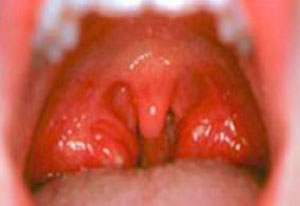 Allergic pharyngitis often appears in adults and children, because our immunity is weakened and now there is little where you can find terrain with perfect ecology.
Allergic pharyngitis often appears in adults and children, because our immunity is weakened and now there is little where you can find terrain with perfect ecology.
Symptoms of the disease often resemble the usual viral disease. When an allergic reaction occurs, swelling of the mucous membrane and uvula, the patient feels acute pain and sore throat, he has a dry cough and can have a stuffy nose. And the voice wheezes, it hurts to swallow and a little swelling in the throat is felt very much, but the temperature does not rise.
Such sensations are well known to residents of megacities, who have to breathe polluted air, industrial waste, dust, exhaust gases, various chemicals and dyes. It is clear that our throat is incredibly suffering from such a strong effect of allergens and therefore, allergic pharyngitis has not been a rare disease recently. But if you go to a doctor in time, you can easily cure the disease. With the right approach in just three days, all the symptoms of this disease should go away.
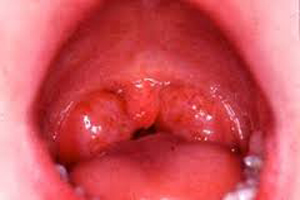 This type of allergy is one of the most dangerous, because it develops suddenly, very quickly and can be dangerous to the life of the patient. After all, when there is angioedema in the throat, it becomes difficult to breathe because the throat is very swollen and does not allow air to enter the respiratory tract. This can lead to suffocation and, as a result, death. Therefore, when detecting signs of angioedema, an ambulance should be called immediately, because the patient has literally a few minutes for first aid.
This type of allergy is one of the most dangerous, because it develops suddenly, very quickly and can be dangerous to the life of the patient. After all, when there is angioedema in the throat, it becomes difficult to breathe because the throat is very swollen and does not allow air to enter the respiratory tract. This can lead to suffocation and, as a result, death. Therefore, when detecting signs of angioedema, an ambulance should be called immediately, because the patient has literally a few minutes for first aid.
- a sudden feeling of anxiety and fear;
- facial skin becomes bluish, may also swell, veins swell around the neck;
- rapidly developing shortness of breath;
- burning and pricking in the throat;
- hoarseness, barking cough;
- with pressure on the throat of the patient does not hurt;
- the victim often breathes, loss of consciousness and convulsions are possible.
All the same allergens provoke the appearance of angioedema, but since this is a reaction of immediate form, it is impossible to ignore its appearance. The patient must provide first aid and appoint proper treatment.
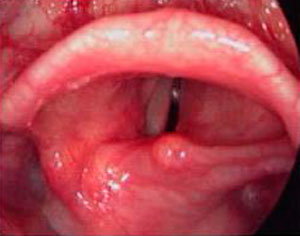 This disease also affects the larynx and results from the activation of microflora, which is constantly present there. But it manifests itself exclusively in certain conditions. The appearance of allergic laryngitis is promoted by the following reasons:
This disease also affects the larynx and results from the activation of microflora, which is constantly present there. But it manifests itself exclusively in certain conditions. The appearance of allergic laryngitis is promoted by the following reasons:
- if the throat becomes cold after exposure to a cold drink or air;
- chemical components that irritate the larynx mucosa;
- dust and smoke effects;
- smoking;
- insect bites;
- some foods that cause allergies.
With the development of inflammation as a result of an allergic reaction, swelling of the throat occurs. sometimes it spreads to the mouth and face. It is difficult for the patient to swallow, his voice becomes husky or disappears altogether, there is a feeling of shortness of breath with a heavy and long breath, dryness and tickling in the mouth. The photo clearly illustrates allergic laryngitis.
This is an acute allergic reaction of the immediate type, affects the upper respiratory tract. Sometimes ailment can be fatal. Most often, anaphylactic shock is caused by insect bites, drugs, food, dust or pollen. After a certain amount of time after the ingestion of allergens, the person suddenly feels sharp pain behind the sternum, there are convulsions, spasms in the throat, a feeling of heat in the body and fear, a headache and swelling of the throat. Due to respiratory failure, blood pressure drops and the patient may lose consciousness.
This allergic reaction is very rare and indicates a weak immunity in humans. It is necessary to treat an illness only under the supervision of a doctor in specialized medical institutions.
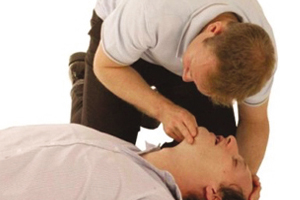 If you have a sore throat for allergies, an allergist will prescribe a special treatment. It includes such steps as eliminating an allergic reaction, relieving inflammation and swelling, alleviating the throat mucosa, cleansing the whole body and improving immunity.
If you have a sore throat for allergies, an allergist will prescribe a special treatment. It includes such steps as eliminating an allergic reaction, relieving inflammation and swelling, alleviating the throat mucosa, cleansing the whole body and improving immunity.
First you need to eliminate the effect of irritating allergens to remove the production of histamine in the body. The patient immediately becomes easier to breathe, dry mouth disappears. After establishing the substance provocateur, the allergist prescribes an individual effective course of treatment. You need to understand that if you don’t consult a doctor with the problem of sore throat and sore throat, but decide to treat yourself with folk remedies at home, as with a cold, this can lead to very sad consequences. In case of an allergic reaction, the body does not respond to the use of conventional antiviral and antipyretic drugs.
In allergies, a sore throat is removed with the help of antihistamine drugs (suprastin, diazolin, tavegil). Sometimes hormonal medications are prescribed. You need to drink plenty of fluids to prevent dehydration of the body and quickly remove the irritant. Doctors recommend rinsing the throat saline (a teaspoon of cooking or sea salt on a glass of warm boiled water).
Be sure to humidify the air in the room where the patient is. Also prescribed vitamin therapy to strengthen the immune system. If you have a sore throat with allergies, you can do a gargle with infusion of motherwort, valerian. Fresh decoction of the series, chamomile, nettle, grape leaves, copes well with the disease. Tea with honey and lemon - excellent folk remedy for removal pain sensations in the throat.
How to avoid the appearance of the disease
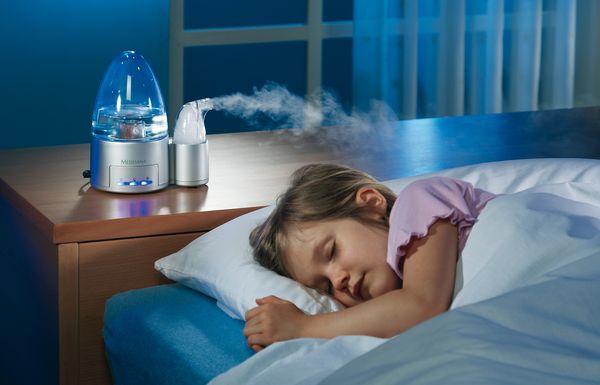 It turns out, in order not to face the manifestation of allergy in the throat, you need to change the place of residence from urban areas to the countryside? Not necessary. It is enough to follow a few simple rules in order to protect yourself as much as possible from such allergic reactions.
It turns out, in order not to face the manifestation of allergy in the throat, you need to change the place of residence from urban areas to the countryside? Not necessary. It is enough to follow a few simple rules in order to protect yourself as much as possible from such allergic reactions.
So, you can prevent the disease in such ways:
- Strengthen immunity, use only natural products.
- Try to replace aggressive household chemicals with more benign options.
- Often do the house wet cleaning, dusting.
- Do not smoke.
- Moisten the air in the office and apartment.
- At home, be sure to change into home clothes.
If you know that this is a manifestation of seasonal allergies - it is better to discuss with your doctor in advance which pills you need to take in order to prevent an allergic reaction in the throat.
Get rid of bad habits and, of course, try to relax more in nature to give your nose and throat to breathe clean air.
2015—2016, LLC "Stadi Group"
Any use of materials from the site is allowed only with the consent of the editors of the portal and the installation of an active link to the source.
The information published on the site is intended solely for informational purposes and in no case calls for independent diagnosis and treatment. To make informed decisions on the treatment and adoption of drugs is necessary to consult a qualified doctor. Information posted on the site, obtained from open sources. For its accuracy, the editors of the portal are not responsible.
Clinical Laboratory Diagnostic Physician
Physician / Dermatologist
Popular
- Breast cancer is curable at any stage.
- The remedy for the cold Sinupret
- Azitrox - official instructions for use
- Chicken-bjaka: allowed antibiotics were found in Russian chicken
- Oral Cancer: Symptoms and Treatment
- Dark and thick blood during menstruation.
- Modern analogues of doxycycline tablets
- Is it possible to die from pneumonia
- What earwax will tell all about your health
- Tussin: instructions for use



